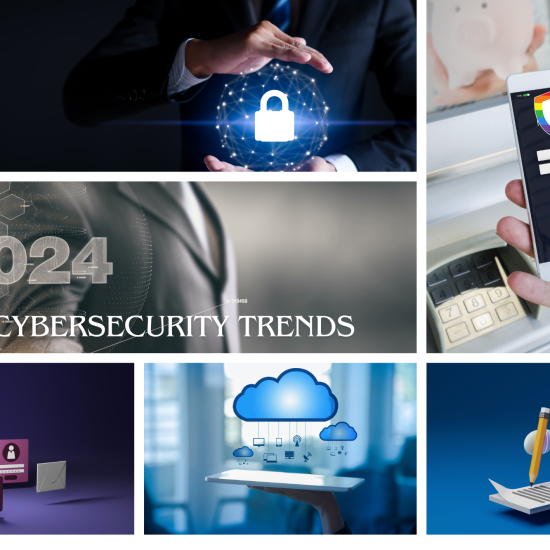Healthcare Industry: Current cyber threats, vulnerabilities, Recent Attacks, and Solutions
The healthcare industry is facing an increasingly complex cybersecurity landscape. As it continues to digitize and rely on technology for patient care, the threats and vulnerabilities in this sector have escalated. Here are some statistics:
- Healthcare organizations across the world averaged 1,463 cyberattacks per week in 2022, up 74% compared with 2021, according to Check Point Research.
- US healthcare organizations continue to be the most compromised by data breaches for the third year in a row, with 344 breaches in 2022, per the Identity Theft Resource Center (ITRC) 2022 Data Breach Report. According to HIPAA Journal, “347 healthcare data breaches of 500 or more records were reported to the Department of Health and Human Services’ Office for Civil Rights” in the first half of 2022 alone.
- Cloud breaches are becoming more common, as 73% of healthcare companies store data in the cloud, per Netwirx Cloud Data Security Report. 61% of healthcare respondents experienced an attack on their cloud infrastructure in 2022 via phishing, ransomware, or other malware attack.
- 53% of connected devices are at risk of a cybersecurity attack, per Cynerio’s State of Healthcare IoT Device Security 2022 report. Most vulnerable are IV pumps (38% of a hospital’s IoT footprint) and VoIP systems (50%). Weak or insecure passwords present the easiest opportunities for compromise.
The ongoing digital revolution has created a sprawling network of interconnected medical devices, causing a scarcity of cohesive inventory management that presents major security and IT challenges for healthcare organizations. The IT department controls the network, but individual medical departments purchase and maintain their own medical devices, allowing hackers to exploit unpatched medical devices and gain access to healthcare networks, resulting in data breaches that can shut down hospitals, directly impacting patient care. For healthcare organizations, the security of patient data and the ability to provide uninterrupted care is crucial.
However, cybersecurity is a challenge as there is a shortage of cybersecurity professionals, leaving organizations with limited resources to hire professionals to provide 24×7 monitoring, detection, and threat response required to protect against modern cyber- attacks.
In this article, you will read about:
Threats in Healthcare Sector
Vulnerabilities in Healthcare Sector
Recent Cyber Attacks in Healthcare
Solutions for Healthcare
How can Rainbow Secure help?
The healthcare sector stores massive amounts of protected health information (PHI), which can be exploited or held hostage in ransomware attacks. The cloud, which dramatically improves healthcare by connecting data across the continuum of care, complicates security and compliance efforts, as electronic health record (EHR) systems handle over 2.5 million requests per day per healthcare organization.
Threats in Healthcare Sector
These are some of the threats in Healthcare Sector.
Ransomware Attacks: Ransomware remains a significant threat to healthcare organizations. Cybercriminals encrypt critical patient data and demand a ransom for its release. Recent attacks, such as the WannaCry and Ryuk incidents, have disrupted healthcare services and put patient safety at risk.
Phishing: Attackers frequently use phishing emails to gain access to healthcare networks. Staff may unknowingly click on malicious links or download infected files, compromising the integrity of medical systems. Mainly conducted through email spoofing and text messages, a common method by which threat actors disguise themselves as a trustworthy entity with the intent to lure many recipients into providing information such as login credentials, banking information, and other personally identifiable information. Phishing is an example of a social engineering technique.
- Business Email Compromise (BEC): Emails designed to trick an employee of the target organization into directly providing PII, credentials, etc. to cyber threat actors.
Distributed Denial of Service (DDoS): A DoS attack that originates from numerous machines at once; can be controlled by a group of threat actors working together or be part of a botnet acting under the direction of a single threat actor.
Botnet: A group of compromised devices that are coordinated by a threat actor; can be used for distributed denial of service (DDoS ), spreading ransomware and malware, sending spam, diverting traffic, stealing data, and/or more.
Insider Threats: Insiders, whether employees or contractors, can pose a substantial risk. Unauthorized access to patient records and intentional data breaches are concerns in healthcare.
IoT and Medical Device Vulnerabilities: As medical devices become more connected, they also become more susceptible to cyber-attacks. Vulnerabilities in these devices can lead to unauthorized access and potential patient harm.
Data Theft: Patient data is a valuable target for cybercriminals. Stolen medical records can be sold on the dark web, leading to identity theft and fraud.
Vulnerabilities in Healthcare Sector
Here we discuss vulnerabilities in healthcare sector.
Legacy Systems: Many healthcare organizations still use outdated, unsupported software and systems. These are more vulnerable to attacks as they lack security updates and weaker authentication methods.
Lack of Resources: The healthcare industry often faces resource constraints when it comes to cybersecurity. Insufficient funding and trained personnel can leave organizations ill-prepared to defend against cyber threats.
Interconnected Systems: The interoperability of healthcare systems can create security gaps. If one system is breached, attackers may gain access to others, increasing the risk of data breaches.
Data Sharing and Privacy: Healthcare organizations need to share patient data securely, but doing so while maintaining privacy can be challenging.
Recent Cyber Attacks in Healthcare
Recent years have seen several high-profile cyber- attacks on healthcare organizations:
HCA Healthcare
On July 5, 2023, Tennessee-based HCA Healthcare, was attacked with cybercriminals gaining access to an external storage location that formatted emails and calendar reminders sent to patients.
While it does not appear that the stolen material included medical records, it did include data such as names, email addresses, birth dates, and other personally identifiable information for more than 11 million patients across 20 states. Later, the stolen HCA data was advertised on dark web by July 10. Meanwhile on July 12, a class-action lawsuit was mounted by impacted HCA patients seeking monetary damages for what they say was a failure to provide adequate protection for their personally identifiable information.
Medibank
Russian-based hackers believed to have ties to the infamous REvil ransomware gang made off with the personal information of 9.7 million customers, including data on 1.8 million international customers and high-profile Australian politicians Prime Minister Anthony Albanese and cybersecurity minister Clare O’Neil.
The information stolen included patient names, dates of birth, social security numbers and, for some, even medical records. The cybercriminals demanded a $10M ransom Medibank refused to pay, stating, “We believe there is only a limited chance paying a ransom would ensure the return of our customers’ data and prevent it from being published.”
Regal Medical Group
This Southern California-based medical group was the victim of a ransomware attack in December of 2022, notifying patients in early 2023. The group stated “categories of impacted personal information may include, among other things: your name, social security number (for certain, but not all, potentially impacted individuals), address, date of birth, diagnosis and treatment, laboratory test results, prescription data, radiology reports, Medicare ID number, health plan member number, and phone number.”
Cerebral
Telehealth organization Cerebral made headlines in 2023 for a data breach. The organization installed tracking pixels from major technology groups (including Google, Meta, and TikTok) on their applications, which caused PHI to be exposed to third parties without patient consent — a major HIPAA violation.
Cerebral notified HIPAA and patients when it was made aware of the error after reviewing their own privacy and logging technology, suggesting they may not have known third parties had access to patient data.
Shields Health Care Group
In May of 2022, this Massachusetts-based medical imaging service provider reported that a cybercriminal had gained unauthorized access to some of its IT systems back in March.
All told, over two million patients had their PHI stolen, including names, addresses, Social Security numbers, insurance information, and medical history information.
Advocate Aurora Health
With 26 hospitals across Wisconsin and Illinois, Advocate Aurora Health is one of the largest healthcare providers in the Midwest. Their improper use of a common website tracking device led to the exposure of the data of three million patients in July of 2022.
Meta Pixel uses JavaScript to track visitors on websites, supplying vital information on how they interact, how long they stay on the site, and where they drop off. Pixels are a useful tool that helps web designers and organizations make their sites more user-friendly.
However, in the case of Advocate Aurora Health, the use of Meta Pixel on patient portals — where patients enter sensitive information — caused PHI to be disclosed, especially if users were logged into Facebook or Google at the same time.
Universal Health Services (UHS)
UHS, one of the largest hospital chains in the U.S., suffered a massive ransomware attack in 2021 that disrupted services in numerous locations.
Ireland’s Health Service Executive (HSE)
A significant ransomware attack disrupted Ireland’s healthcare system, causing widespread service disruptions.
Solutions for Healthcare
Advanced Cybersecurity Training: Regular training for healthcare staff is essential to recognize and respond to cyber threats effectively.
Robust Authentication Methods: Use robust authentication solutions from Rainbow secure that protect healthcare providers and patients’ critical data from unauthorised access and cyber threats.
Regular Software Updates: Ensure that all systems, including medical devices, are regularly updated with the latest security patches.
Network Segmentation: Segregate networks to limit the lateral movement of attackers in case of a breach.
Access Control: Implement strict access control measures to restrict unauthorized personnel from sensitive patient data.
Incident Response Plans: Develop and test incident response plans to minimize damage and maintain essential services in the event of an attack.
Third-Party Risk Assessment: Evaluate the security practices of third-party vendors and ensure they meet cybersecurity standards.
Encryption and Data Loss Prevention: Encrypt data at rest and in transit to protect patient information.
Zero Trust Architecture: Implement a zero-trust approach, where trust is never assumed, and all access is verified.
The healthcare industry is under constant siege from cyber threats, and the consequences of a breach can be life-threatening. To safeguard patient data and ensure the integrity of medical systems, healthcare organizations must invest in robust cybersecurity measures, training, and incident response plans. Staying ahead of evolving threats is essential to maintaining patient trust and delivering high-quality healthcare in our increasingly digital world. That’s where Rainbow Secure comes in. We are a team of trained cybersecurity experts who can create a custom solution to meet your needs.
Rainbow Secure plays a pivotal role in fortifying healthcare sector against cyber threats. In an era where digital security is no longer optional but a necessity, Rainbow Secure stands as a guardian, offering robust, user-friendly, and compliant security solutions.
Enhanced Security: Rainbow Secure multi-dimensional approach to security, incorporating unique color and style-based authentication, has redefined the meaning of ‘secure login’. By protecting against threats like keyloggers, brute force, and phishing attacks, we ensure that healthcare sector can operate in the digital realm with confidence and peace of mind.
Simplified User Experience: Understanding that complexity is the enemy of security, Rainbow Secure has revolutionized the user experience. Our intuitive and customizable login process not only enhances security but also fosters user engagement and compliance. This ease of use is critical in ensuring that security measures are consistently and effectively implemented across organizations.
Compliance and Regulation: In today’s regulatory landscape, compliance is not just about checking boxes. It’s about protecting reputations, building trust, and ensuring long-term sustainability. Rainbow Secure helps healthcare sector navigate this complex terrain, adhering to stringent standards like GDPR, HIPAA, and NIST, among others. Our commitment to compliance is a testament to our dedication to not just meeting, but exceeding, the highest standards of data protection and privacy.
How can Rainbow Secure help?
Right amount of data and system access to right person or role at right time is the key to organizations being able to use digital tools and platforms to serve the customer base and stay compliant.
Next Generation Rainbow Secure platform is a modern identity authentication (MFA) and single sign- on (SSO) solution for your business across on-premises and cloud environments. It’s backed by an experienced team of cloud and security experts, years of innovation, and partnerships with leading cloud platforms. Rainbow Secure is a Leader in Smart and Secure Digital Solutions that work for you.
Insider Threats: Rainbow Secure assists in mitigating insider threats by implementing access controls, user monitoring, and privilege management solutions. Also, if the user leaves behind unlocked devices, saved passwords in the password manager or browser can be misused by malicious insiders. Interactive login security from Rainbow Secure helps prevents unauthorized access and protects against data theft or misuse by privileged users.
ChatGPT Security for business: Secure your ChatGPT login and Data with Rainbow Secure MFA Plugin.
Secure AI Integration: Consult Rainbow Secure Team to integrate AI in your business workflows powered by Azure and Rainbow Secure API.
Secure Workforce & Customer login: Use Authentication Plug-in by Rainbow Secure to secure workforce and customer logins. In this plug-in, you get a multi-dimensional password, passwordless login solutions with AI monitoring, Risk Analytics, and location fencing.
IoT Friendly Security: IoT platform developers can secure their cloud endpoints, and user logins (both admin and customer) against unauthorized access and scripted malware attacks using easy to adapt and support multi-layer interactive rainbow secure authentication solutions and services that includes but not limited to security assessment, API Security, secure user onboarding, and risk analytics.
Secure Data and its Backups We provide Cloud based data vault and data archive solutions backed by Microsoft Azure and secured by our authentication plugin and industry best practices to give you ransomware protection, help with data governance and disaster mitigation.
Database Security We provide technical consulting services to Secure Databases in cloud and on premise. You get best protection for your data in databases using native and third-party security tools.
Meet Compliance Requirements: Use Authentication Plug-in by Rainbow Secure with your business application and in SSO (Single Sign-on) and meet industry standards and compliance regulations such as NIST, ISO, FTC, SOX, SOC2, CMMC, CMMI, HIPAA, PCI, and others.
Securely communicate and Collaborate: Use Secure Business Email by Rainbow Secure and get protection against account takeover, phishing, ransomware, and automated login cyber frauds. In this email, you get options to send encrypted emails, single sign-on with Office 365, and Google, and 1 TB one drive storage.
Connect Business applications: Get one unified login using Rainbow Secure Single Sign-On
Manage User Onboarding / Offboarding using Rainbow Secure IAM
Verify User using Smart Multi-factor MFA. Smart Multi-Factor Authentication from Rainbow Secure which adjusts to your use case, reduces the cyber liabilities of a business from stolen credentials and improves productivity, and enhances user experience.
Do you have more questions about how Rainbow Secure innovative solutions help to enhance your security posture and safeguard your healthcare infrastructure and critical data? Contact us today. Email us at Hello@rainbowsecure.com







